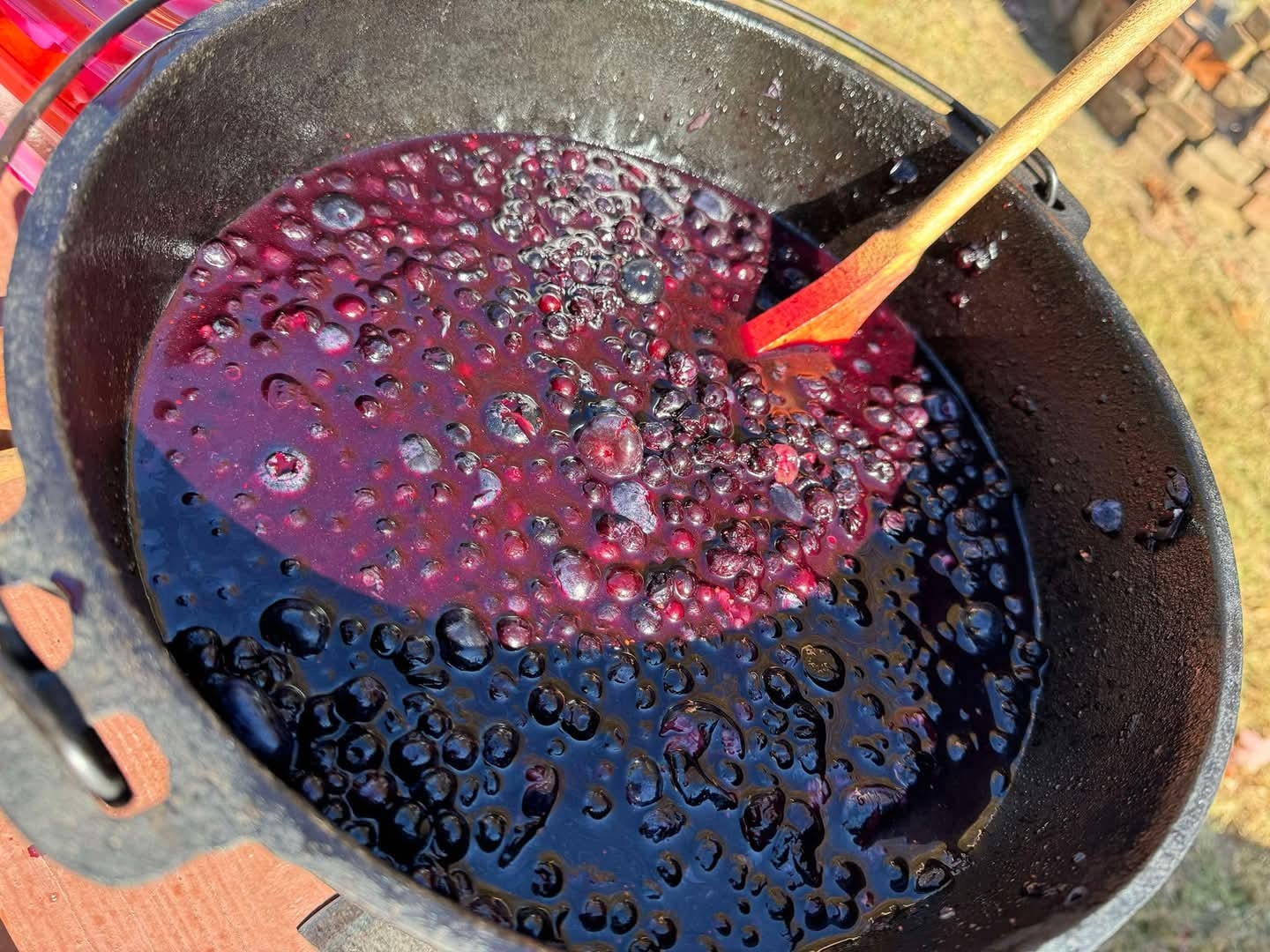Indigenous Community Garden Cookbook

Here is the Indigenous Community Garden Cookbook
Here lies a collection of recipes created by members of the Virginia Tech Indigenous Community, Indigenous culinary artists/knowledge keepers, and local lovers of food. The several heritage crops that have been cultivated and gathered in the Indigenous Community Garden are linked to these recipes.
Vegan Recipes
Three Sister Stew
Photo Taken by Kayla Surley. Three Sister Stew from Culinary Traditions at VSU. October 2024.

Author/Creator of Recipe:
Chef Joseph Rocchi (Pamunkey Indian Tribe)
Background:
This recipe was made by Chef Joseph Rocchi. This recipe was presented at the first Virginia State and Virginia Tech Culinary Traditions in October 2024. This stew centered around the harmonious synergy of three prominent Indigenous crops (Corn, Beans, and Squash).
½ Cup of Oil (Preferred Sunflower Oil or Vegetable Oil)
2 Large Yellow Onion (Diced)
2 Large Carrot (Diced)
2 Large Celery Sticks (Diced)
6 Garlic Cloves (Smashed)
1 cup of White Wine
2 tablespoons of Apple Cider Vinegar
2 tablespoons of Lemon Juice
1 gallon of Broth (Vegetable or Animal Broth)
1 oz of rinsed dried mushrooms (whole or chopped)
6 Sage Leaves
2 cans of hominy (28oz)
1 Plum tomatoes (chopped)
½ cup of cornmeal
½ cup of hominy grits
Optional - add 4 lbs of meat (recommended pork shoulder or pork neck meat or turkey thighs)
Heat oil in a deep pot over medium-high heat.
Sear pork in batches until browned, then remove (avoid burning the brown bits).
Leave ½ cup of oil in the pot, adding more if needed.
Add onion, celery, and carrot; cook until carrots soften. Add garlic and cook for 2 minutes.
Add wine/stock mixture, scraping browned bits from the pot.
Add remaining stock, mushrooms, sage, hominy, tomato, and chili (if using). Return pork (or alternative protein) to the pot.
Bring to a boil, then reduce to a simmer. Skim broth, cover, and simmer for 30 minutes (45–60 minutes for meat). Stir occasionally and add water if needed.
Add corn and cook for 5 more minutes.
Mix cornmeal and 2 cups stock or water until smooth; stir into stew. Repeat with hominy grits. Simmer for 5 minutes until the grits are soft.
Serve with fry bread, cornbread, or wild greens pest
Three Sisters Fried Wild Rice

Author/Creator of Recipe:
Chef Joseph Rocchi (Pamunkey Indian Tribe)
Background:
This recipe was made by Chef Joseph Rocchi and presented at the first Virginia State and Virginia Tech Culinary Traditions in October 2024. This stew centered around the contemporary fusions of Indigenous traditional ingredients and Asian ingredients to develop a recipe exploring the aspects of flavors with Indigenous cuisine. This recipe was adapted from Chef Brian Tatsukawa.
“This recipe was developed through working with many Native American Chefs and wanting to merge dishes from my own background. This recipe can be adjusted with the addition of various proteins as well as topping the fried rice with a sunny side egg or even adding scrambled eggs into the mixture. My family’s favorite is to start with bacon and render the fat and when the bacon becomes crispy, remove the bacon and sauté the vegetables in the bacon fat. This version is obviously much healthier.”
-Chef Joseph Rocchi
4 tbsp of Vegetable Oil
2 to 4 Garlic Cloves
1 Large Carrot (Shredded)
½ Large Zucchini (Finely Diced)
½ Large Yellow Squash (Finely Diced)
½ cup of Corn Kernels
½ cup of Green Beans
¼ cup of Winter Squash (Peeled and Finely Diced) - Boiled and Chilled
1 ½ cup of Cooked Wild Rice
2 cup of Cooked White Rice
2 tbsp of Soy Sauce
Optional - Add Pepper, Salt, and Chili Flakes
Heat 2 tbsp oil in a large sauté pan or wok over medium-high heat.
Add zucchini and yellow squash; sauté until browned.
Add corn, green beans, winter squash, and garlic (and ginger, if using); sauté for 2-3 minutes.
Season with salt and pepper.
Add another 2 tbsp oil and heat.
Add white rice and sauté until heated through.
Add wild rice, chili flakes (if desired), and soy sauce around the pan edges.
Mix thoroughly and adjust seasoning as needed.
Wojapi Yesą́

1 cup of Maple syrup
16 oz of Red Mulberries (Frozen)
16 oz of Blackberries (Frozen)
16 oz of Strawberries (Frozen)
8 oz of Raspberries (Frozen)
1 cup of American Plums Puree
1 tablespoon of salt
¼ cup of Staghorn sumac juice


